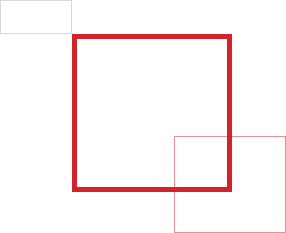Education & Local Government
In the face of mounting challenges, public leaders have an opportunity to create a new vision, rebuild infrastructure and develop stronger community ties.
Transform How Boards and Leaders Work Together
Meeting & Agenda Management
Seamlessly create, update and share agendas and board meeting materials.
Director Preparation
Access resources, view upcoming meetings and annotate board materials from any device.
Minutes & Actions
Easily capture minutes and actions during a meeting. Assign contributors and set automated prompts.
Signature & Resolutions
Send documents for approval integrated with DocuSign.
Virtual Data Rooms
Share and collaborate on documents with stakeholders in a secure room.
Secure Messaging
Have private conversations on a dedicated channel integrated for easy access.
Questionnaires
Complete self evaluations or D&O questionnaires in the same place as the boards material.
Director
Get new directors up to speed with the resources they need in one location.
Composition Planning
Identify gaps in board composition and recruit from a pool of 250,000 board members.
Building Back Stronger: Shared Values and a Long-Range Vision Create Resilient Communities
As the pandemic enters our rear view, new cultural and societal norms have emerged. Institutions we’ve long relied on have wobbled. Public safety, misinformation, data security, civil unrest, supply chain issues, an uncertain economy: These are some of the mounting challenges communities face today. Yet leaders have an opportunity to create a new vision, rebuild infrastructure and develop stronger community ties.
As we were coming out of the pandemic, we knew we needed a change. People were talking about going back to the way it was, and one of the conclusions we came to as a district leadership team is that we didn't want to go back to the way it was. We wanted to create something better.
— Dan Romano, Treasurer/CFO, West Clermont Local School District
“As we were coming out of the pandemic, we knew needed a change,” said Dan Romano, Treasurer/CFO, West Clermont Local School District. “People were talking about going back to the way it was, and one of the conclusions we came to as a district leadership team is that we didn't want to go back to the way it was. We wanted to create something better.”
Romano’s sentiments were echoed by many education and community leaders at Modern Governance Summit. They agreed that good governance and community-building start with collaborating on a shared vision that encompasses all stakeholders.
“Any time you are leading an organization and you say, ‘Here’s my vision,’ people don’t really care about your vision,” said James Hopper, Superintendent at Venus ISD. “You have to be able to construct a vision collectively with your community. If it’s not the community’s vision, it’s no vision at all. You can talk about your vision all you want to, but it will remain your vision.”
Any time you are leading an organization and you say, ‘Here’s my vision,’ people don’t really care about your vision. You have to be able to construct a vision collectively with your community. If it’s not the community’s vision, it’s no vision at all. You can talk about your vision all you want to, but it will remain your vision.
— James Hopper, Superintendent at Venus ISD
Communities are eager to come together face-to-face to tackle familiar and new issues. Leaders must leverage this excitement and engagement to create a shared vision build on shared values.


“A vision tells you where you're going. Your values tell you who you are,” said Hopper.
Hopper outlined key steps for building a shared vision with your community.
- Determine what’s important to you. Have an open session and collectively start asking “What are our values?"
- Create a consolidated, single list of those values that is organized and easy to read.
- Narrow your focus. Discuss each item on the list one-by-one to determine if it can be removed from the list. Those that can’t be removed become your “core values.”
- Define your vision. Continue eliminating items from your list until you have about 5-8 core values. This then will become your vision.
Once you have established a shared vision, community partners and stakeholders will be invested in seeing it come to fruition. “We looked at establishing a shared vision as a tool to animate the community, to activate the community into action to help us help kids,” said Brad Sarron, Superintendent, Sun Prairie ISD.
It is more important than ever for school boards and local governments to create long-range plans that can demonstrate measurable progress toward the shared community vision. A plan, particularly one backed by renewed resources such as remaining COVID-19 funds, helps local boards address their biggest challenges. Integral to the plan's success is developing key performance indicators (KPIs) that help benchmark progress and highlight areas that need more attention.
Romano listed three key questions organizations need to ask when creating a strategic plan:
- What needs to happen? With your shared vision as your guide, this question will help to determine your goals.
- What do stakeholders need to do? A community organization has a diverse group of stakeholders, and in a community organization, stakeholders are frequently the ones executing toward your goal. Posing this question allows you to match goals to KPIs, develop a roadmap and choose key areas of investment.
- What do our stakeholders need to know and understand? Leaders must bridge the gap between leaders and doers, and they must communicate boardroom-level ideas and plans with a diverse group of stakeholders. As Romano explained, “You have to meet people where they want to be met. People of my generation don’t want to go to social media, but Gen Y and Z don't want to go to a town hall.”

Romano went on to say, “[You] need to have the right culture in order to execute.” By engaging stakeholders with clear communication and a shared vision, you are developing the right culture to get community buy-in to achieve your goals.
Finally, you need to provide regular progress updates to stakeholders to show that their financial and social investments have produced results.





